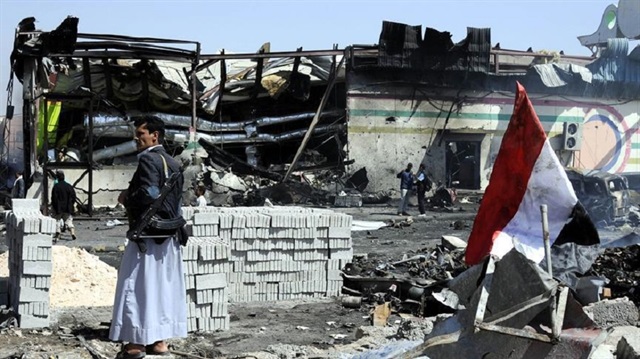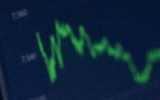
Recent plunge in value of local currency adds rampant inflation to country’s long list of woes
The people of war-torn Yemen continue to face severe hardships, especially given recent declines in the value of the country’s currency.
At the beginning of 2015, the Yemeni rial had traded at roughly 215 to the U.S. dollar. It now trades at about 630 to the greenback.
This has led to a major rise in commodity prices -- in some cases as much as by 300 percent -- since the country’s conflict began about four years ago.
According to Amal al-Salawi, a teacher who lives in Sanaa, life in the capital -- overrun by Houthi rebels in 2014 -- has become untenable.
“Even loaves of bread have shrunk to a quarter of their original size, while a single egg now costs 70 rials [roughly $0.10],” she told Anadolu Agency.
“We don’t know how to get by anymore; salaries haven’t been paid for the last two years and now our currency is collapsing,” al-Salawi lamented.
“The government has no presence [in Sanaa],” she added. “The Houthis have left us with nothing.”
According to an Anadolu Agency correspondent based in the region, prices of many commodities have almost doubled, with the retail cost of a single chicken recently jumping from 1,200 rials (roughly $1.85) to 2,000 rials (roughly $3.10).
Before the conflict, per-head chicken prices had stood at about 800 rials.
Traders, for their part, attribute the price hikes to the ongoing decline of the local currency’s value.
Commodity retailer Ahmed al-Shamiri told Anadolu Agency that local traders were taking losses due to almost daily price fluctuations.
“People blame us for the rising prices, accusing us of ‘profiteering’,” he said. “But the truth is that the rial is falling each day.”
According to Abu Bakr Baabid, chairman of the Yemeni Chamber of Commerce, an acute demand for foreign currency has put downward pressure on the rial, while Yemen’s government and central bank have been largely unable to remedy the problem.
“The government and central bank have failed to deal seriously with the crisis,” Baabid told Anadolu Agency.
“The central bank has failed to keep its promise to help traders import goods, thus forcing them into the parallel market,” he added.
On Wednesday, the government (based in the city of Aden since 2014) approved a raft of measures ostensibly aimed at shoring up Yemen’s embattled currency.
It also vowed to tighten its grip on state resources while also restricting imports -- including petroleum products -- in hopes of preventing a foreign-currency outflux.
“Coming days will see the national economy stabilize in coordination with the Saudi-led coalition [established in 2015 to fight the Houthi rebel group],” Prime Minister Ahmed bin Daghr was quoted as saying by state news agency SABA.
Impoverished Yemen has remained wracked by conflict since 2014, when Shia Houthi rebels overran much of the country, including capital of Sanaa.
The conflict escalated the following year when Saudi Arabia and its Sunni-Arab allies launched a wide-ranging air campaign in Yemen aimed at rolling back the Houthis’ territorial gains.
The ongoing violence has devastated Yemen’s basic infrastructure, prompting the UN to describe the situation as “one of the worst humanitarian disasters of modern times”.











